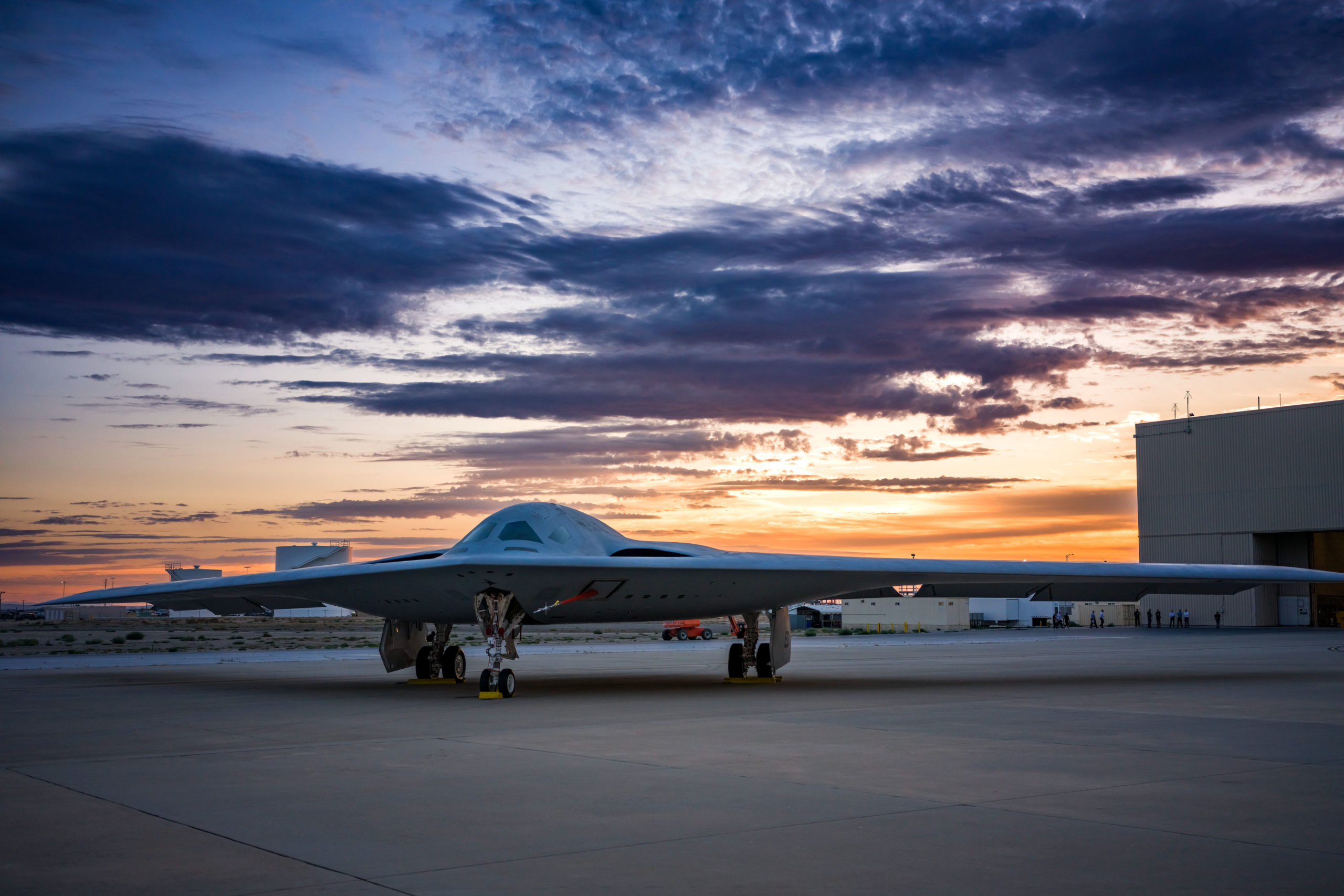
A year ago, at Northrop Grumman’s Palmdale, Calif. facilities, the U.S. Air Force rolled out its closely guarded B-21 stealth bomber, the first new bomber aircraft to be added to its inventory in more than 30 years.
So closely guarded that only the front and the sides were visible at the unveiling so as “not to unveil the design around the engine outlets, which is likely designed to reduce detectable heat…”
On November 10, Raider – under the call sign “Raider 01” — took its inaugural test flight. It took off from Palmdale, California, on a 90-minute flight to Edwards Air Force Base.
It was captured on video by freelance photojournalist Matt Hartman (below) and was photographed by many “plane spotters” anxious to learn more about the secretive aircraft which has been kept under wraps in keeping with DoD’s wishes. (Note: The second aircraft taking off towards the end is the B-2 Spirit)
The B-21 program is a Special Access Program. In 2021, a Congressional Research Service Report noted that several B-21 technical details such as “size, required stealth, structure, number and type of engines, projected weapons, and onboard sensors” remained classified.
It appears that the Air Force and its contractors have been very successful as, for example, even after sightings of the aircraft in flight, it is still not known for certain how many engines power the Raider.
Using the newly released ChatGPT AI tool, corroborated by reliable sources, I wrote about the B-21 “Raider” here.
In summary:
The Raider, developed by Northrop Grumman, is designed to evade radar detection, operate in tomorrow’s high-end threat environment and conduct a variety of missions, including nuclear and conventional strike, intelligence, surveillance, and reconnaissance. It will be a key element of the Pentagon’s efforts to modernize all three kegs of its nuclear triad.
It will replace the aging fleet of U.S. Air Force B-1 Lancers, B-2 Spirit bombers, and some of the venerable B-52 Stratofortress bombers as these aircraft are retired.
The B-21 Raider is expected to have a two-person crew, consisting of a pilot and a co-pilot or weapon systems officer. However, it could potentially be flown with a single pilot, or even unmanned, depending on the mission profile.
It will employ a broad mix of nuclear and conventional, stand-off and direct attack weapons and munitions. Some of the nuclear and conventional armament mentioned in the open literature includes the AGM-181 Long Range Stand Off Weapon (LRSO) missile, B61-12 guided free-fall bomb, the AGM-158A JASSM and extended-range AGM-158B JASSM-ER cruise missiles and AGM-154C JSOW precision glide bombs.
It is difficult to find accurate technical performance specifications — as it should be — on such an advanced, strategic asset.
From open sources we learn the following:
Dimensions: Span 150 ft. (estimated, approximate), Height 18 ft. (estimated, approximate).
Powerplant: Pratt & Whitney turbofans.
Performance: Speed high-subsonic (estimated), range intercontinental.
With its low-observable flying-wing design (similar to the B-2, but simpler in shape), deeply recessed engine inlets, the use of composite materials with a radar-absorbent honeycomb structure, special coatings, etc., the bomber has a minimal infrared signature and radar cross section. Features expected to be among the most advanced in the world.
The Air Force is planning to procure a minimum of 100 aircraft at an average unit procurement cost that may exceed $900 million, possibly making it the most expensive warplane ever built. (“Reported,” because even the unit price is classified.)
Raider 01 is one of six test B-21s being produced. The first B-21s are expected to be delivered in the mid-2020s to Ellsworth AFB in South Dakota, which will host the B-21’s training unit and serve as the plane’s first main operating base.
In addition, Whiteman AFB, Missouri, and Dyess AFB, are slated to receive aircraft, while Tinker AFB, Oklahoma, will coordinate maintenance and sustainment of the B-21. Edwards AFB, California, will continue to lead testing and evaluation of the aircraft.
The B-21 is christened “Raider” in honor of the 80 heroic U.S. Army airmen, the Doolittle Raiders, who flew 16 B-25 bombers in a surprise attack against Japan in April 1942. “The designation B-21 recognizes the Raider as the first bomber of the 21st century.”
Sources:
B-21 takes flight, heads to Edwards AFB for more tests
Nuclear stealth bomber, the B-21 Raider, takes first test flight.
New B-21 Bomber Takes First Flight
B-21 Raider makes public debut; will become backbone of Air Force’s bomber fleet.
/
















